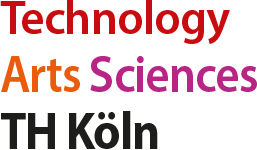As mentioned in a previous blog post, we developed an iterative algorithm for training decision trees (DTs) from trained deep reinforcement learning (DRL) agents. The algorithm combines the simple structure of DTs and the predictive power of well-performing DRL agents. In our publication, we tested the idea on seven different control problems and successfully trained...
Dataninja Closing Conference
Time flies... It wasn't that long ago (or at least it feels like it) that I wrote a blog post about the first Dataninja Retreat. Now we already held the closing conference of the Dataninja project. From Tuesday 25th to Thursday 27th we had the pleasure to enjoy three days of science and meetups at...
Visiting the AAAI Conference on Artificial Intelligence in Vancouver
In the last week of February, my RL3 Dataninja colleague Moritz Lange and I had the chance to visit the AAAI conference on AI 2024. Listening to Yann LeCun in person speak about the challenges of machine learning was inspiring and attending Moritz' presentation of our collaborative work "Interpretable Brain-Inspired Representations Improve RL Performance on...
Dataninja-Tandem wins Best Paper Award at LOD 2023 conference
Our participation in this year's edition of the LOD conference, as previously announced in one of our blog post, proved to be an exceptionally enjoyable experience. The systematic evaluation of auxiliary tasks in reinforcement learning published in “Improving Reinforcement Learning Efficiency with Auxiliary Tasks in Non-Visual Environments: A Comparison” by first author Moritz Lange (Dataninja-colleague...
Dataninja Retreat 2023
From September 6th to September 9th we held our last annual retreat of the Dataninja research training group in Krefeld. Alongside our invited speaker's talk (Dr. Alessandro Fabris from Max Planck Institute for Security and Privacy) about algorithmic fairness, each PhD candidate from the Dataninja projects presented their progress and current investigations. In my contribution...
Two papers accepted for our second participation at LOD 2023 conference
For the second time we (Raphael Engelhardt and Wolfgang Konen) have been given the opportunity to present our work at the Conference on machine Learning, Optimization and Data science (LOD) conference. To this year's 9th edition, held in Grasmere, England, UK on September 22nd - 26th we have the honor to contribute even two papers...
Article Published in Special Issue of "Algorithms"
We are delighted to announce that our article “Iterative Oblique Decision Trees Deliver Explainable RL Models” was accepted and is now part of the special issue “Advancements in Reinforcement Learning Algorithms” in the MDPI journal Algorithms (impact factor 2.2, CiteScore 3.7) . Explainability in AI and RL (known as XAI and XRL) becomes increasingly important....
Dataninja Spring-School 2023
The second edition of the Dataninja Spring-School was held from 8th to 10th of May 2023 in Bielefeld and as a hybrid event. We had the honor and pleasure to attend talks and tutorials from renowned researchers and aspiring young scientists. We contributed with an extended abstract and our scientific poster “Finding the Relevant Samples...
AI in Nuclear Power Plant Simulation: Steinmüller Engineering Award for Niklas Fabig
The operation of nuclear power plants (NPPs) is one of the most safety-critical tasks in industry. Prior to using AI methods in this area, it should be thoroughly investigated and evaluated via simulations, whether AI can learn (e.g.´, by reinforcment learning, RL) to power up and shut down a nuclear reactor and how well such...
Presenting our Approach to Explainable Reinforcement Learning at LOD 2022 Conference
As previously announced, last week I had the pleasure to present our joint work with our partners from Ruhr-University Bochum on explainable reinforcement learning at the 8th Annual Conference on machine Learning, Optimization and Data science (LOD). The presentation sparked interesting questions and lead to inspiring discussions in the enchanting ambiance of the medieval monastery...
